Feeling overwhelmed by stress and looking for a way to relax? Yoga meditation is a powerful tool to enhance mental clarity, emotional balance, and physical well-being. Even if you’re new to meditation, following a few simple steps can help you get started with ease.
As a beginner, you might face challenges like distractions or difficulty staying still—but don’t worry! With the right approach, you can build a strong meditation habit.
In this article we explored 7-step guide to help you begin your yoga meditation journey.
By following these steps, you’ll experience less stress, improved focus, and better sleep—leading to a healthier and more balanced life.
Let’s start!
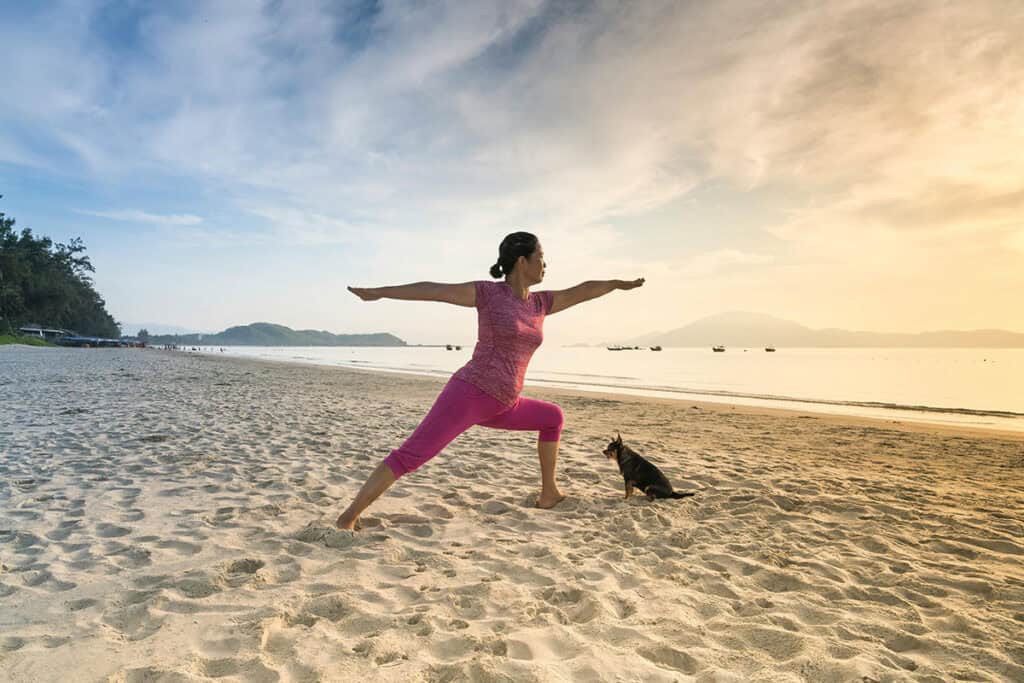
Benefits of Yoga Meditation for Beginners
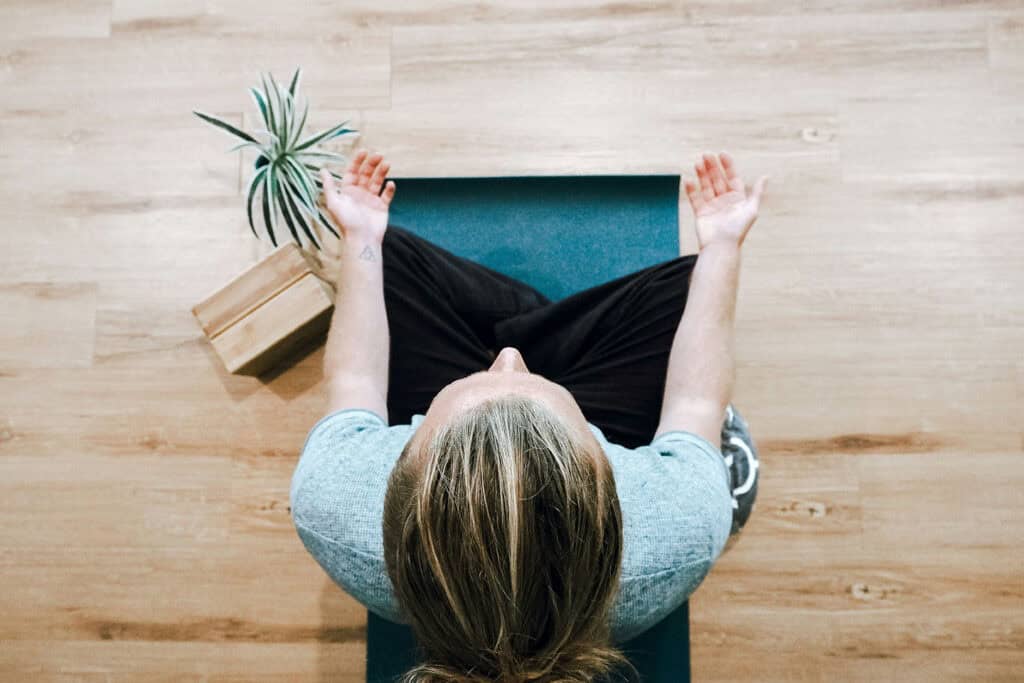
Yoga meditation offers many benefits. It can help improve mental and physical health. Beginners may find it challenging at first, but practice makes it easier.
- Reduces stress and anxiety
- Improves focus and concentration
- Boosts emotional well-being
- Increases self-awareness
- Enhances flexibility and posture
- Supports better sleep patterns
These benefits make yoga and deep meditation a powerful tool for a balanced life.
See also Best Meditation Books
How to Start Yoga Meditation for Beginners
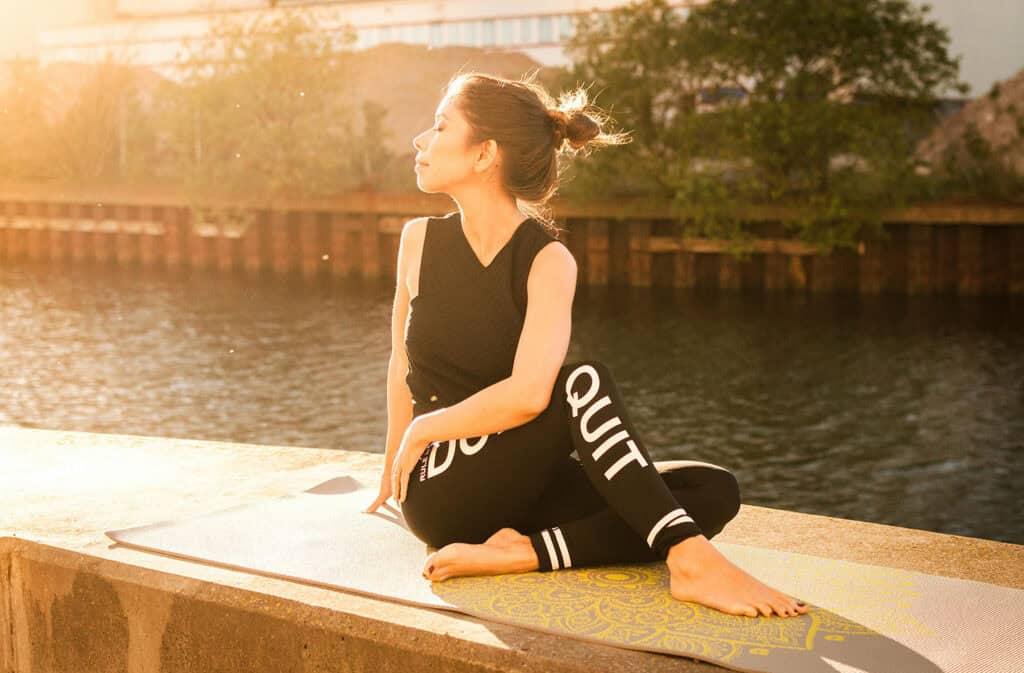
Starting yoga meditation can feel overwhelming. But with simple steps, anyone can do it. Follow these basics to begin your practice and wellness.
1. Choose a Quiet Space
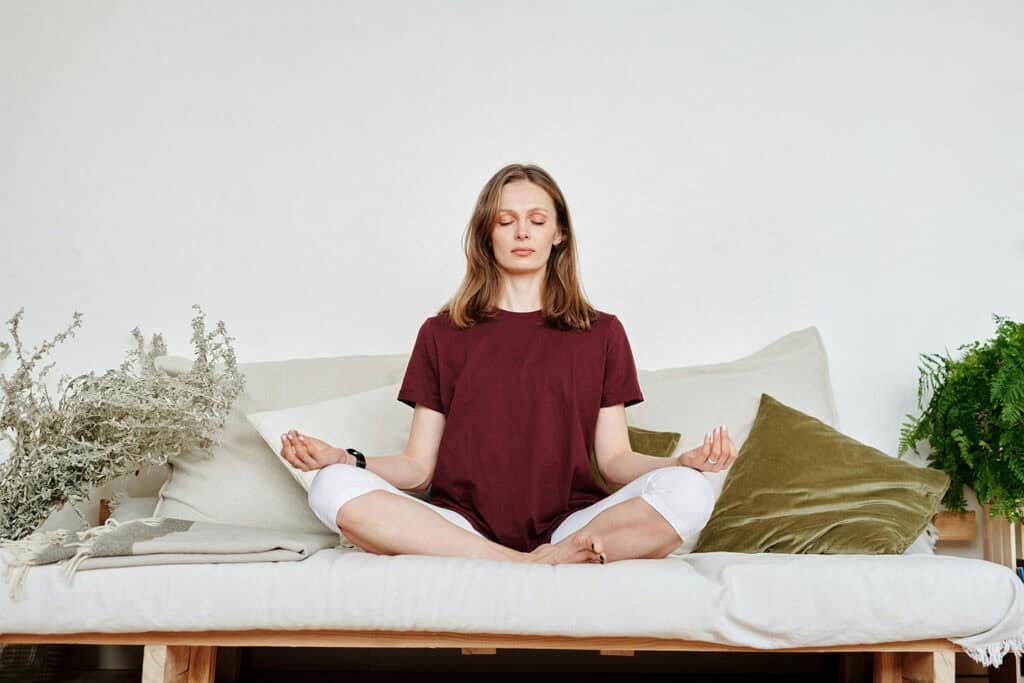
A peaceful space is important for meditation. It helps you focus without distractions. Find a place in your home where you feel calm. Make sure it is clean and free from noise. You can add soft lighting or candles. A yoga mat or cushion will make sitting more comfortable.
Creating a dedicated meditation area can help you build a habit. The space should make you feel at peace.
2. Sit Comfortably

Sitting posture affects your meditation. A good posture helps with concentration and breathing. Sit cross-legged on a mat or chair. Keep your back straight and shoulders relaxed. Place your hands on your knees or lap.
Close your eyes gently. Stay relaxed but alert. If sitting on the floor is uncomfortable, use cushions for support. A comfortable posture helps you focus without distractions.
3. Focus on Your Breath
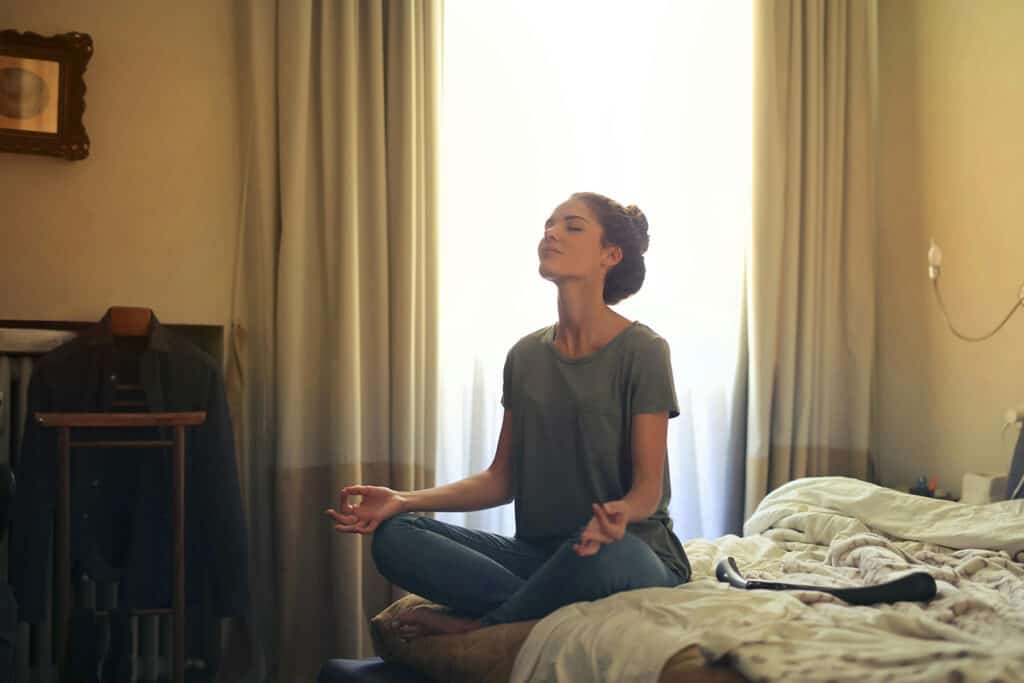
Breathing is a key part of Meditation for focus and energy. It helps calm the mind and body. Take slow, deep breaths. Inhale through your nose and exhale through your mouth. Focus on the rhythm of your breath.
If your mind wanders, bring attention back to your breathing. Controlled breathing improves relaxation and mindfulness. Practicing this daily enhances concentration and reduces stress.
4. Use a Mantra or Visualization
A mantra or image can help improve focus. Repeat a simple word like “peace” or “calm” in your mind. You can also imagine a peaceful place, like a beach or forest. This helps clear the mind of distractions.
Mantras provide a mental anchor, while visualization creates a soothing mental picture. Both techniques help beginners stay focused during meditation.
5. Start with Short Sessions
Beginners should start with short meditation sessions. Gradually increase the time as you get comfortable. Begin with five minutes per session. Over time, increase to ten or fifteen minutes.
Consistency is key. Daily practice helps build a strong habit. Short sessions prevent frustration and make it easier to stick with meditation. As you progress, longer sessions will feel more natural.
See also 10 Minutes Sleep Meditation
6. Set a Regular Schedule

Having a fixed meditation schedule helps in forming a habit. Choose a time that works best for you, such as early morning or before bed. Meditating at the same time daily makes it easier to maintain consistency. Even if your schedule is busy, commit to a few minutes every day.
Regularity is more important than duration in the beginning. Over time, your body and mind will adjust, making meditation a natural part of your routine.
7. Practice Patience and Self-Compassion

Meditation takes time to master. Beginners often struggle with distractions and restlessness. Be patient with yourself. Do not judge your progress harshly. Accept that your mind will wander, and gently bring your focus back.
Meditation is a journey, not a race. With consistent practice, you will notice gradual improvements in focus and relaxation. Self-compassion helps you stay motivated and enjoy the process rather than stress about results.
Best Techniques of Yoga Meditation for Beginners
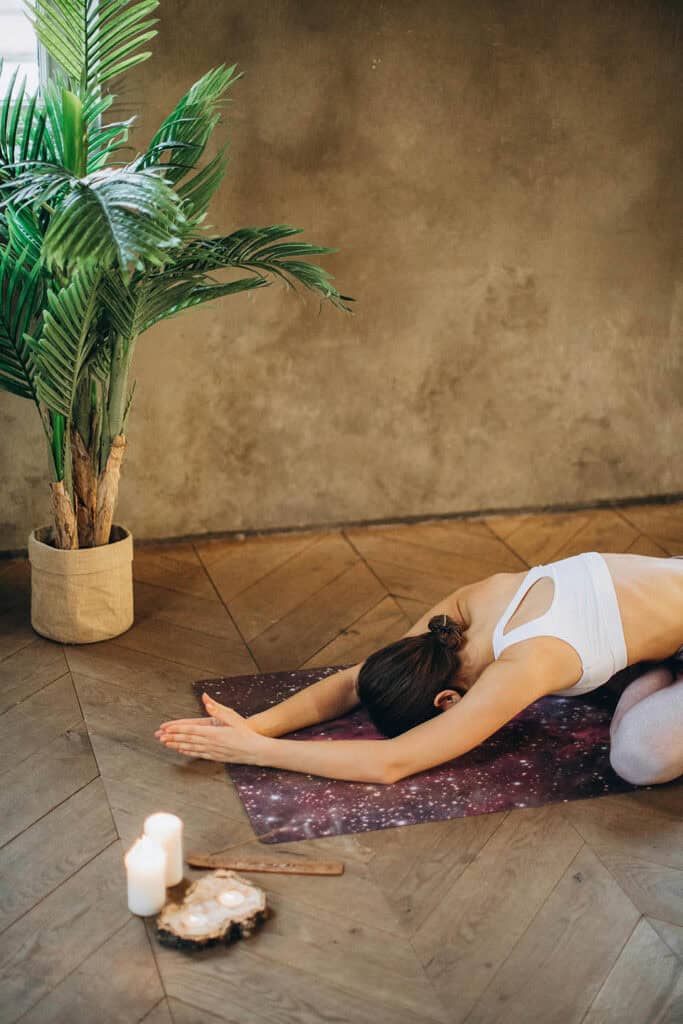
There are different meditation techniques. Each one offers unique benefits. Here are some easy methods for beginners.
1. Mindfulness Meditation
Mindfulness means being present in the moment. It helps increase awareness and reduces stress. Sit in a comfortable position. Focus on your breath, body, or surroundings. If thoughts arise, acknowledge them without judgment. Gently bring focus back to the present moment. This technique improves mental clarity.
2. Guided Meditation
Guided meditation is helpful for beginners. It provides instructions to follow. Use meditation apps or videos to guide your practice. A teacher’s voice leads you through relaxation and breathing. This method helps you stay on track. It is great for those who struggle with focus.
3. Loving-Kindness Meditation
This technique promotes kindness and positive energy. Close your eyes and take deep breaths. Think of someone you love. Send them good wishes in your mind. Repeat phrases like “May you be happy and healthy.” Over time, extend these wishes to yourself and others. This practice brings emotional balance.
4. Body Scan Meditation
Body scan meditation helps relax muscles and reduce stress. Lie down or sit comfortably. Close your eyes and take slow breaths. Focus on different parts of your body, starting from your toes. Notice any tension and let it go. This method promotes deep relaxation.
How Beginners Can Learn Yoga
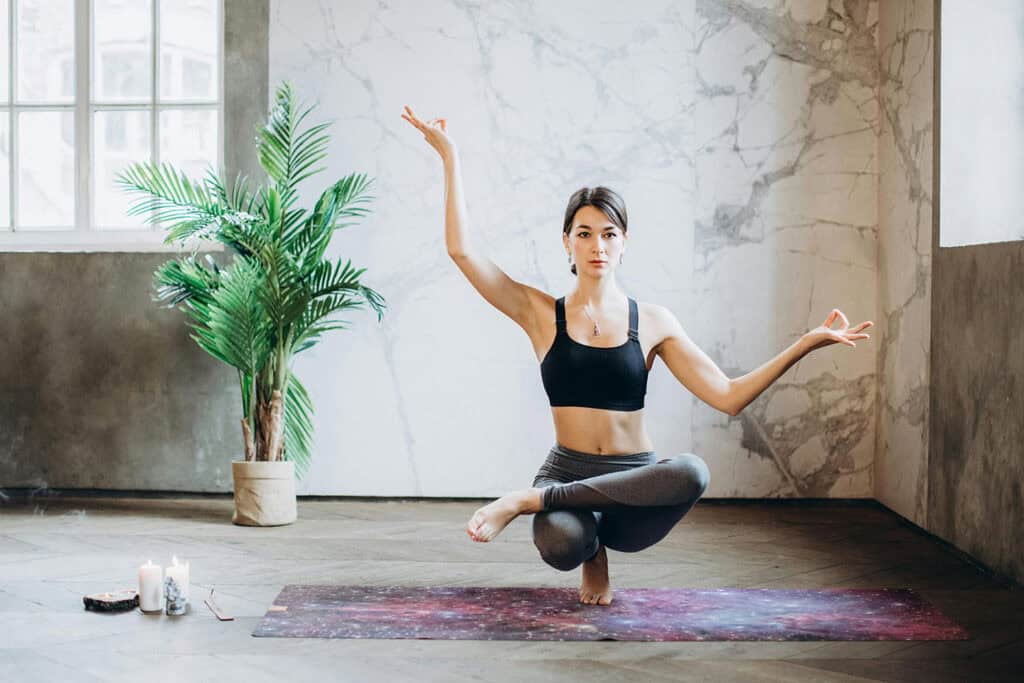
Learning yoga is a gradual process. It involves understanding poses, breathing techniques, and meditation. Beginners should start with simple yoga postures and gradually advance. Focus on stretching and building flexibility before attempting complex movements.
Practicing yoga regularly improves strength and balance. Combining yoga with meditation enhances mental well-being.
Different Ways to Learn Yoga:
- Online Classes: Many websites and apps offer beginner-friendly yoga courses.
- Yoga Studios: Attending local yoga classes helps with guided instruction.
- Books and Videos: Learning through books and video tutorials is helpful.
- Private Instructors: Hiring a yoga teacher provides personalized guidance.
- Group Sessions: Practicing with friends or community groups enhances motivation.
- Self-Practice: Practicing daily at home helps reinforce learning.
Tips for a Successful Yoga Meditation Practice

- Meditate at the same time daily to build a habit
- Keep your practice simple and consistent
- Use soft music or nature sounds for relaxation
- Wear comfortable clothing
- Avoid meditating on a full stomach
- Be patient with yourself and enjoy the process
Common Challenges and How to Overcome Them

Beginners often face challenges when starting yoga meditation. Here’s how to handle them.
- Restless Thoughts
It is normal for thoughts to arise during meditation. Instead of fighting them, observe them. Let them pass like clouds in the sky. Gently bring focus back to your breath or mantra. With practice, your mind will settle.
- Discomfort in Sitting
Sitting for long periods can cause discomfort. Use cushions or a chair for support. Stretch before meditation to loosen muscles. Change positions if needed. Over time, your body will adjust.
- Lack of Focus
It is common to feel distracted. Start with short sessions. Use guided meditations to stay on track. Be patient and kind to yourself. Focus will improve with practice.
See also Shower Meditation
Yoga Meditation for Beginners: A Recap
Starting a meditation practice can feel overwhelming, but simple techniques help you ease into it. Begin your yoga practice with mindfulness meditation, focusing on the present moment and physical sensations. Bring awareness to your whole body, noticing how your body feels as you breathe.
If your mind wanders, gently return to your focal point—whether it’s your breath, a mantra, or a candle flame in candle gazing. Try a shower meditation to relax or walking meditation to stay active. In hatha yoga, movement and meditation blend naturally.
Over time, these meditation tools help you feel calmer. If you need guidance, a meditation teacher can support your journey. Just gently lift your awareness each time you start meditating.


